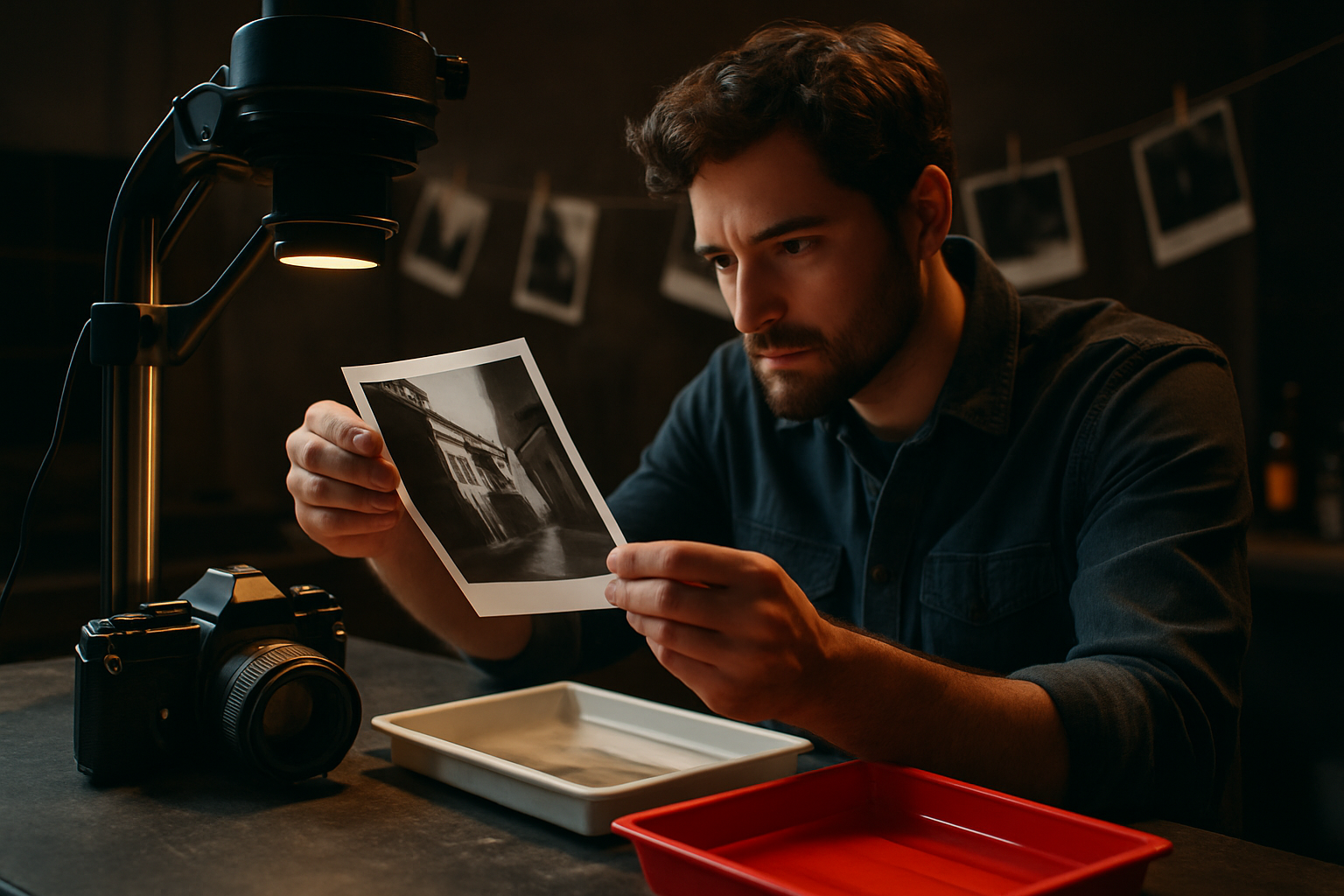The Resurgence of Analog Photography in the Digital Age
In an era dominated by digital technology, a surprising trend has emerged in the world of photography. Analog photography, once thought to be obsolete, is experiencing a remarkable comeback. This resurgence is not merely nostalgia-driven but represents a profound shift in how artists and enthusiasts approach image-making. As digital cameras become increasingly sophisticated, why are so many turning to film? Let's explore the fascinating revival of analog photography and its impact on contemporary visual culture.

The Roots of Analog Revival
The roots of the analog revival can be traced back to the early 2000s when digital photography began to dominate the market. As film cameras were relegated to dusty shelves, a small but passionate community of photographers continued to champion the unique qualities of analog processes. This dedication laid the groundwork for the current resurgence, which has gained momentum over the past decade.
The Aesthetic Appeal of Film
One of the primary drivers behind the analog renaissance is the distinctive aesthetic of film photography. The grain, color rendition, and tonal range of film create a look that many find more organic and pleasing than digital images. This aesthetic has become increasingly desirable in an age where digital perfection is the norm, offering a sense of authenticity and tactile quality that resonates with both creators and viewers.
The Slow Photography Movement
Analog photography inherently requires a slower, more deliberate approach to image-making. This has given rise to the slow photography movement, which emphasizes thoughtful composition and patient observation. In a world of instant gratification, the process of shooting, developing, and printing film provides a meditative counterpoint to the frenetic pace of digital photography.
The Educational Value of Analog Processes
Many photography schools and programs have reintroduced analog techniques into their curricula, recognizing the educational value of understanding traditional photographic processes. Learning to shoot on film forces students to master fundamental concepts such as exposure, composition, and lighting without relying on immediate digital feedback. This approach often leads to a deeper understanding of photography as both an art form and a technical craft.
The Impact on the Photography Industry
The resurgence of analog photography has had a significant impact on the photography industry. Film manufacturers have resumed production of previously discontinued films, and new companies have emerged to meet the growing demand for analog products. Camera manufacturers have also taken note, with some releasing new film camera models or reissuing classic designs. This revival has created a vibrant ecosystem of small businesses, from specialty film labs to boutique camera shops, catering to the analog community.
Analog in the Digital Workflow
Interestingly, the analog revival doesn’t reject digital technology outright but often incorporates it into a hybrid workflow. Many photographers shoot on film but scan their negatives for digital editing and distribution. This blend of old and new technologies allows artists to leverage the strengths of both mediums, creating a unique aesthetic that marries the warmth of film with the flexibility of digital post-processing.
The Cultural Significance of the Analog Revival
The resurgence of analog photography reflects broader cultural trends, including a desire for authenticity, a rejection of disposable consumer culture, and a renewed appreciation for craftsmanship. It also speaks to a growing awareness of the environmental impact of digital technology, with some photographers viewing film as a more sustainable long-term archival medium.
Challenges and Future Prospects
Despite its growing popularity, the analog revival faces challenges. The cost and availability of film and processing can be prohibitive, and the learning curve for analog techniques can be steep. Additionally, as digital technology continues to advance, the question remains whether the unique qualities of film can be replicated digitally, potentially diminishing the appeal of analog processes.
Conclusion
The resurgence of analog photography in the digital age is more than just a passing trend. It represents a reevaluation of our relationship with technology and art, challenging the notion that newer is always better. As the movement continues to evolve, it promises to enrich the world of photography, offering new perspectives and possibilities for creative expression. Whether shooting on film or digital, the analog revival reminds us of the enduring power of the photographic image and its ability to capture moments in time with unique beauty and authenticity.





